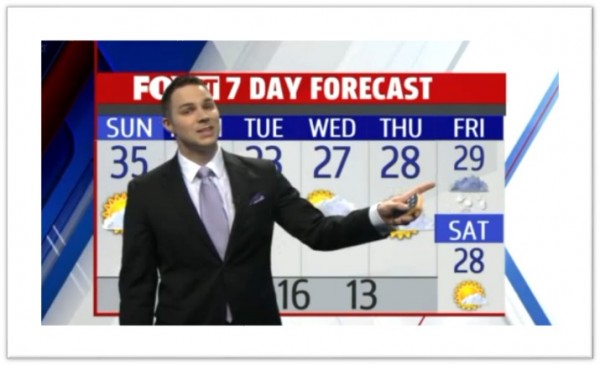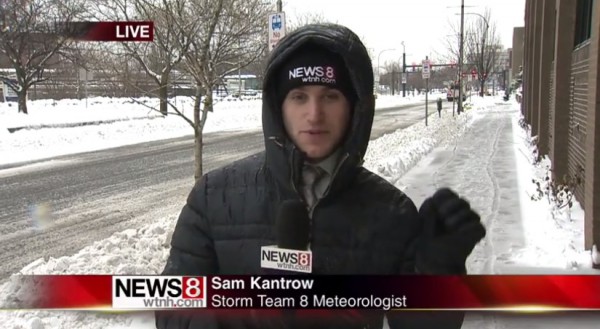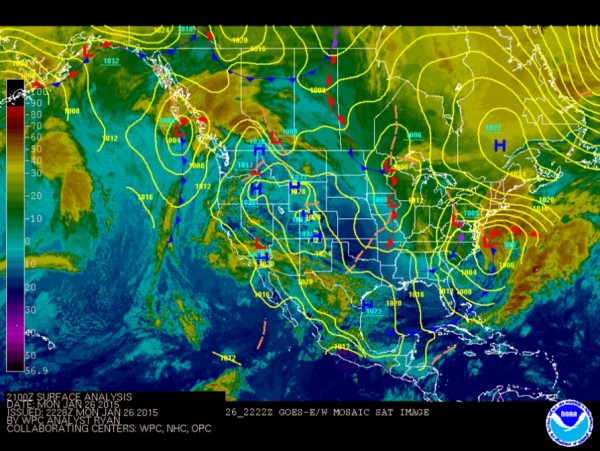Two Sons of CT Use State University Program to Drive Local TV Meteorology Careers
/Among the meteorologists reporting on the Blizzard of 2015 on Connecticut's local television stations are Dan Amarante and Sam Kantrow, who began their careers as student meteorologists-in-training at Western Connecticut State University and now can be seen on FOX Connecticut and NewsChannel 8. Amarante has lived in Connecticut his entire life, growing up in Cheshire, and graduated from Western Connecticut State University with a Bachelor of Science in Meteorology. While at WCSU, he produced and anchored many school run weather broadcasts for the University’s website, as well as forecasts for the school’s radio station. Western Connecticut State University has the state's only meteorology program, which was run for many years by WTNH-TV meteorologist Dr. Mel Goldstein. The WCSU website is chock full of charts and maps highlighting the latest conditions.The site includes the latest Geostationary Satellite Images from the Space Science and Engineering Center at the University of Wisconsin and the National Weather Service radar mosaic Northeast Sector loop. Greater detail is offered in Surface Charts from the National Weather Service and a series of Upper Air charts courtesy of Unisys Weather. The school has a Weather Center, where students produce forecasts and work with clients while studying meteorology.
Western Connecticut State University has the state's only meteorology program, which was run for many years by WTNH-TV meteorologist Dr. Mel Goldstein. The WCSU website is chock full of charts and maps highlighting the latest conditions.The site includes the latest Geostationary Satellite Images from the Space Science and Engineering Center at the University of Wisconsin and the National Weather Service radar mosaic Northeast Sector loop. Greater detail is offered in Surface Charts from the National Weather Service and a series of Upper Air charts courtesy of Unisys Weather. The school has a Weather Center, where students produce forecasts and work with clients while studying meteorology.
After college, Amarante got his start at WGGB ABC40/FOX6 in Springfield, MA, where he was the weekend weather anchor. He is a Certified Broadcast Meteorologist, the highest certification from the American Meteorology Society.
Meteorologist Kantrow joined "Storm Team 8" on WTNH in February, 2011, first as weather producer and web meteorologist, and is now the on-air meteorologist for the weekend editions of Good Morning Connecticut. Born and raised in Hamden, he is a graduate of WCSU and has a B.S. in Operational Meteorology and Weathercasting. Before coming to News 8, Kantrow interned at NBC Connecticut. The WTNH website reports that "Sam’s weather interest began at a very young age, when the tornado that went through Hamden on July 10, 1989 narrowly missed his house! Ever since then, he has loved the weather, and anything about the weather. Sam grew up watching the meteorologists on News 8 and always wondered what it would be like to be in their shoes."
WCSU's Bachelor of Science in Meteorology is the only such program in Connecticut, and one of only a few in the Northeast. The university has developed a foundation of courses in mathematics, computer science, physics, astronomy and earth science, combined with meteorology, to prepare you for television and radio weathercasting, operational forecasting, or for teaching or research in the atmospheric sciences . Students in the bachelor's program earn credits while performing TV/radio weathercasts or doing real-time forecasting for clients in the university's on-campus Weather Center, according to the WCSU website.
. Students in the bachelor's program earn credits while performing TV/radio weathercasts or doing real-time forecasting for clients in the university's on-campus Weather Center, according to the WCSU website.
The program meets recommendations for an undergraduate meteorology degree program from the American Meteorological Society. Additionally, students graduating with this B.S. Meteorology degree will have all the course requirements for entry level positions as a meteorologist with the National Weather Service, the single largest employer of meteorologists in the country.
The university also offers a graduate program - a Master of Arts in Earth and Planetary Science, Meteorology/Climatology Option.
Last October, WCSU hosted the 5th Annual Tri-State Weather Conference on campus in Danbury, presented by the university's Meteorology Program and co-sponsored by the WestConn Student Chapter of the AMS, the New York City/Long Island Chapter of the AMS, NOAA/National Weather Service/Upton, N.Y and NOAA/National Weather Service/Taunton, MA. The purpose of the conference was to enhance education, professional development and communication among private and public sector meteorologists, researchers, educators, students, emergency management officials, and weather enthusiasts. Amarante, who joined FOX Connecticut in early 2011, was master of ceremonies for the conference at his alma mater.
The meteorology program at Western also includes among its graduates television meteorologists in a number of cities across the country. In addition to his work in Connecticut, Amarante has filled in as a weather producer at CBS 2 in New York City, and became snowed in at the station during the Blizzard of 2010. Kantrow, who will be on-air reporting on the Blizzard of 2015 beginning at 3 AM on Tuesday, may find himself in similar circumstances, if forecasts for the day's snowfall come to fruition.































